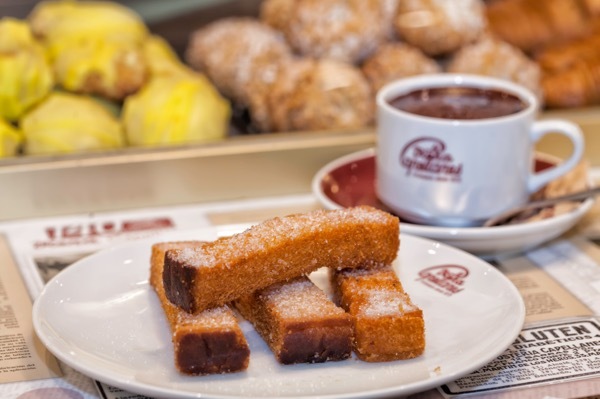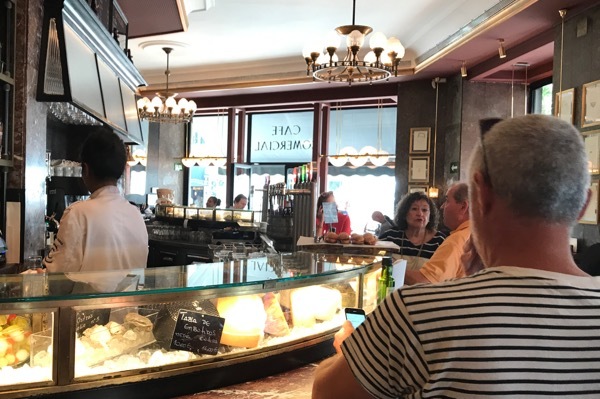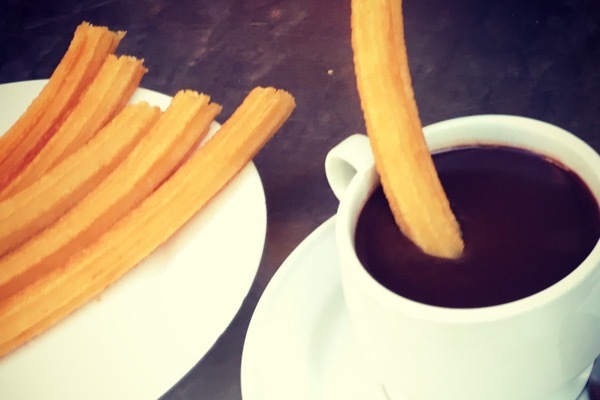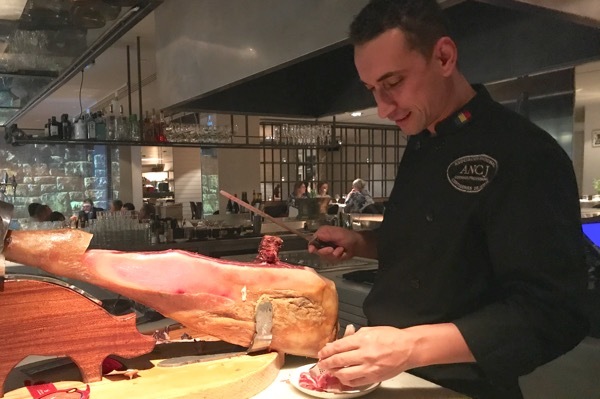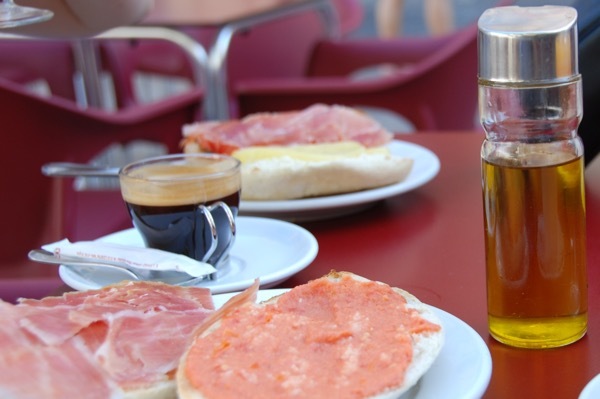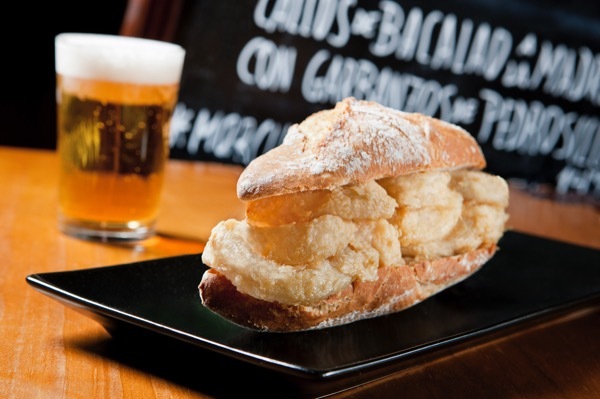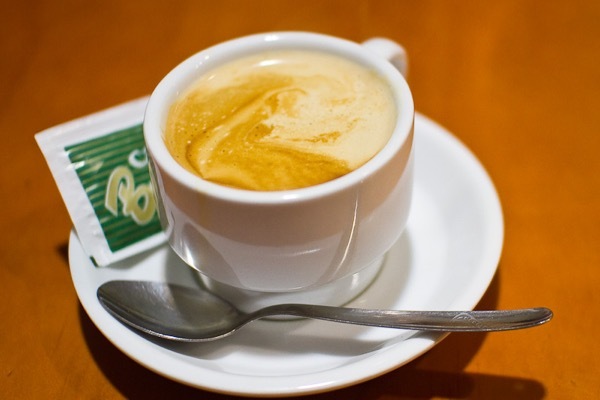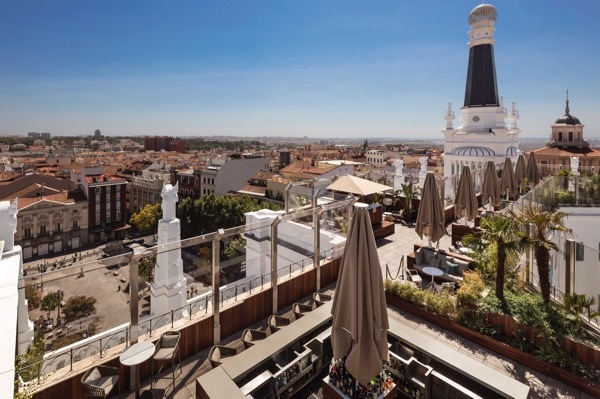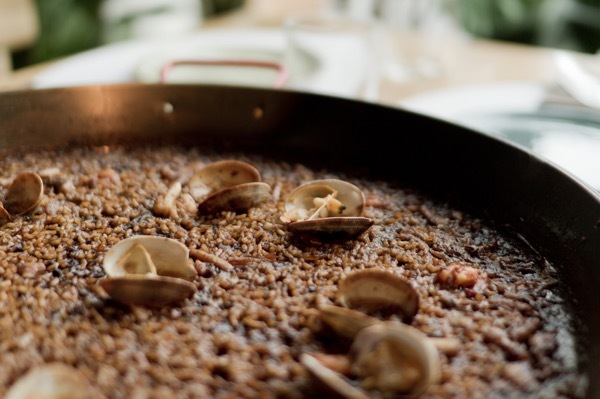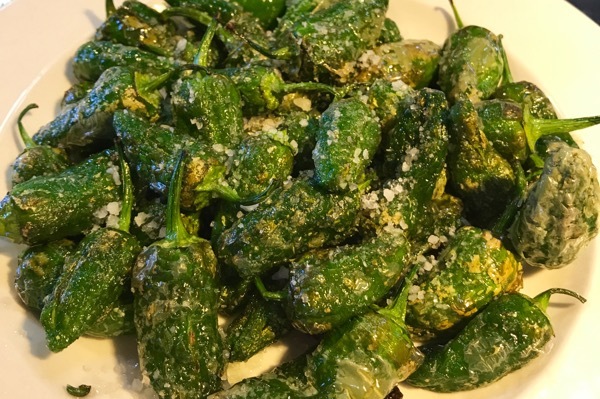10 Food Rules to Follow in Spain, Plus How to Order Tapas
By Melissa KlurmanBriny olives, fresh seafood, rich hams, sharp cheeses, deep-fried delights: Food lovers know that Spain offers up some of the tastiest mouthfuls in Europe. And at affordable prices, too—bite-size tapas supply authentic local flavors for only a few euros. That is, if you know how to order. Follow these foodie dos and don'ts and you'll be dining like the locals before you can say "tortilla Española." (That's Spain's most popular small dish, and you're about to learn how to get it.)
Headed to Spain? Our full guide, Frommer's Spain, has everything you need to plan the perfect trip.Getting a quick hit of caffeine in the morning, a sandwich in the afternoon, or a late glass of wine in a cafe doesn’t have to be expensive in Spain if you order at the bar. The trick is to stand at the counter while you enjoy your beverage or snack. Expect to pay at least a euro more if you want to sit at a cafe table, and an extra one to two more to enjoy a scenic view at an outdoor seat.
Ham is a popular sandwich filling, tapa (small plate), and breakfast accompaniment throughout Spain, but if you want the gold standard of ham products, you need to order it by name. And that name is Jamón Ibérico. This pork prize comes from free-roaming, black-footed Iberian pigs that feast on foraged acorns. You'll often see full legs of it (with black hooves attached to prove authenticity—sorry, non-meat eaters) hanging from the ceiling, and these legs may also be displayed with pride on a special stand in full view of the dining room or tapas bar. The pricey, air-dried meat will be the best where you see a leg on display. After you order, a specially trained slicer will hand-carve the ham into translucent slices. Feel free to lift them with your hands: This is a basic finger-food pleasure.
Unless it's summer along the coast or you're making pitchers of it at home, sangria isn't the thing to drink when you're in Spain. In fact, many bars don't serve the fruity wine punch at all. So if it's central on a menu, you've probably wandered into a tourist spot. What to drink instead? Before dinner or with tapas, try vermouth, meant to stimulate the appetite, mixed with seltzer and served over ice. Or get a "gintonic" (a traditional gin and tonic, but pronounced as one word), small glasses of beer called caña, or a glass of vino (wine). With dinner, wine from Spain is always a good choice—particularly red (including rioja, a Spanish specialty), white, rosé, or sparkling. Craft beers are also gaining in popularity around the country.
Olive oil is Spain's go-to condiment. Let it pool into shimmering chartreuse green puddles on your plate, or drizzle golden fireworks onto your food. While bread is always served with a meal, you'll never get a cold, hard pat of butter to go with it. Instead, pick up the bottle of oil that's no doubt been placed on the table and sprinkle some onto your bread or plate. For breakfast, follow the Spanish lead and rub a thin layer of fresh tomato and some heart-healthy olive oil onto your toast for pan con tomate, a staple of Spain's healthy Mediterranean diet.
Some countries frown on multiple pre-supper snacks and meals eaten on the go, but in Spain, the day is almost a rolling buffet, with a series of dining opportunities big and small scattered from morning through evening. Start your day with either a sweet breakfast of fried picatostes (French toast-like sticks) or churros dipped in chocolate or a café con leche (strong coffee with milk) at a cafe. (A long, multi-dish, sweet-and-savory Sunday brunch is popular in big cities such as Barcelona and Madrid). In early afternoon, a snack might be a sandwich filled with cured ham or a bacata de calamares (a sandwich of fried calamari). Soon, locals are ready for a large hot meal served between 2 and 3pm. After work, it's tapas time, with small bites and drinks. Finally, if you're still hungry, have dinner—but not at the hour you're used to. Usually it's served at 10pm or later. If you ever wondered why Spaniards eat so late at night, now you know: They spend the daylight hours chowing down.
The most popular way to order a coffee at a cafe is “un café solo”—a single strong pull of coffee similar to an espresso (pictured above). If you want your caffeine a little diluted, order a cortado, a solo with a little hot milk (cortado means "cut") or a café con leche for a half coffee/half hot milk mixture—this option is served in a larger cup and is most popular at breakfast. For a tall coffee similar to what you'd find at home, order an americano, which combines strong Spanish coffee with hot water. Unless you discover an American chain coffee shop, don't expect huge, syrupy sweet coffee drinks or take-away paper cups. In Spain, coffee is treated with more respect.
Although Spaniards may stand to snack, when they do sit, they relax and enjoy their food at a leisurely pace. And if the weather is nice, they'll opt to eat outside at rooftop lounges and bars (like this one at the ME Madrid Reina Victoria) or at outdoor plazas. Bonus points if there's a pretty view while you dine. Yes, these prime seats may come at a slight premium, but that's cheap for the sense of place that comes with having Spain spread at your feet as you dine.
Spaniards cook more rice dishes than just paella, but you wouldn't know it from looking at tourist menus. If you want to sample an authentic version, head to Valencia on the northwest coast and order paella Valenciana, which features rabbit, beans, and poultry (and sometimes snails, but never seafood). A real paella must be made in a special flat-bottom pan, and the finished product should have a crispy crust (soccarat). Paella is not a personal meal but a communal dish that should be shared—and it's perfectly acceptable to eat right out of the pan (with wooden spoons). When you get to the prized golden, saffron-infused soccarat, feel free to reach in with your fingers and break off a piece. In other parts of Spain, rice dishes are also popular, but they're not paella; look instead for arroces. Popular versions include arroz negro (black rice) made with squid ink and arroz a la catalana with sausage and pork.
While you're in Spain, you simply must partake in tapas, the tradition of small dishes and drinks in the early evening (or, if you've chosen to skip a formal dinner, late into the night).
- Pincho: Want to try just a small plate that includes olives, tortilla Española (the ubiquitous egg-and-potato frittata), or fried patatas bravas? A pincho offers a taste; it's usually ordered with an aperitivo (an appetite-stimulating alcoholic beverage) before lunch or dinner. In the Basque region, a pintxo is a small skewered bite (think a small pickled onion, cheese cube, and piece of ham on a mini kebob).
- Tapas: In addition to the options under pincho, above, most traditional spots will offer an array of croquettes (savory fried fritters), empanadas (fried stuffed pastries), pulgas (bite-size sandwiches with meat or cheese), and encurtidos (pickled items that include a wide array of olives), plus lots of specialties of the house including anchovies in oil, gambas (shrimp), and roasted vegetables.
- Raciones: If you’re with a group and want to share with friends, order these communal plates. Popular raciones include sausage, cheese, albondigas (meatballs), peppers like the roasted ones shown above, and potatoes. Even if you’re really hungry, don’t try to order a racion for yourself. Each one is so big that you’ll get some strange looks.





